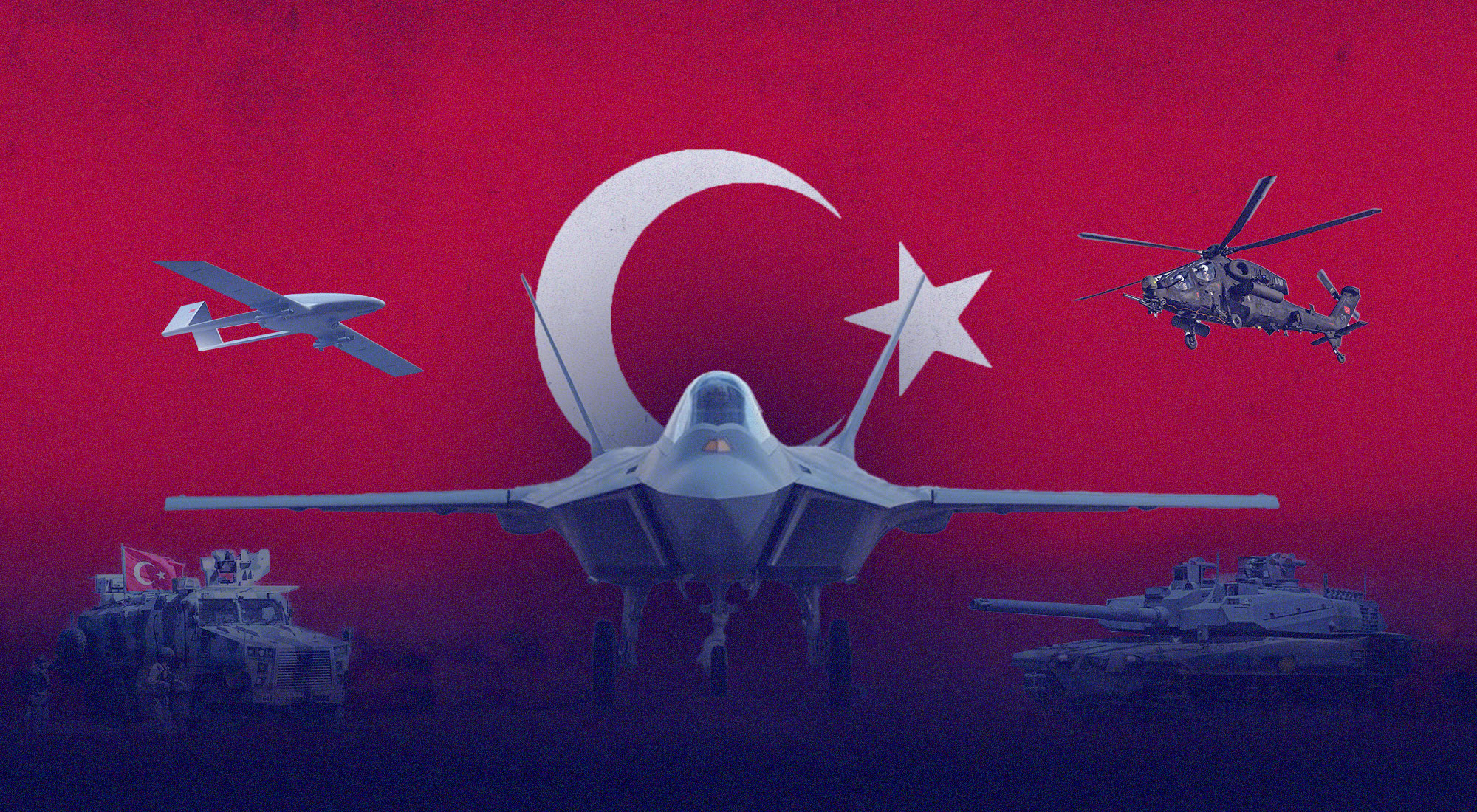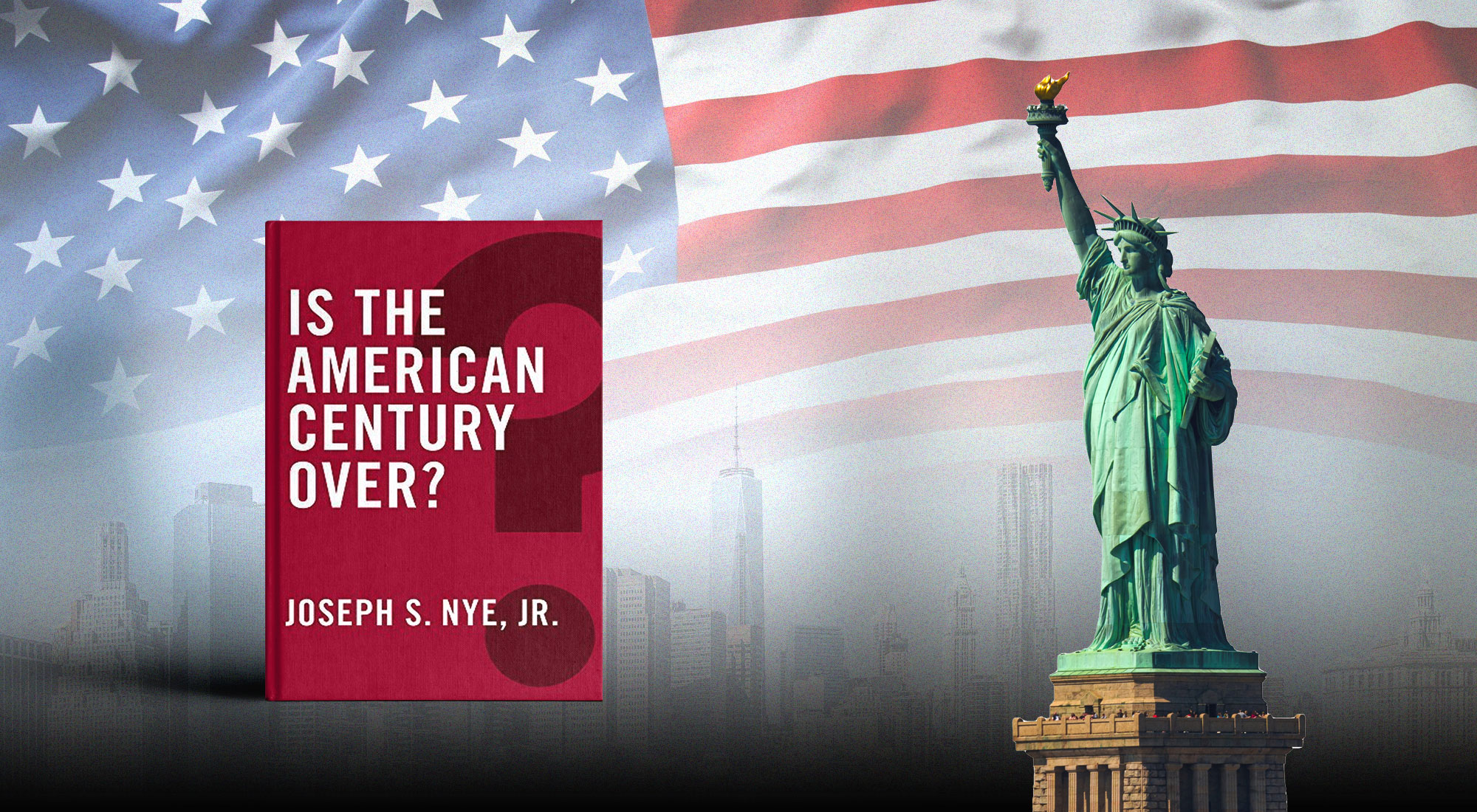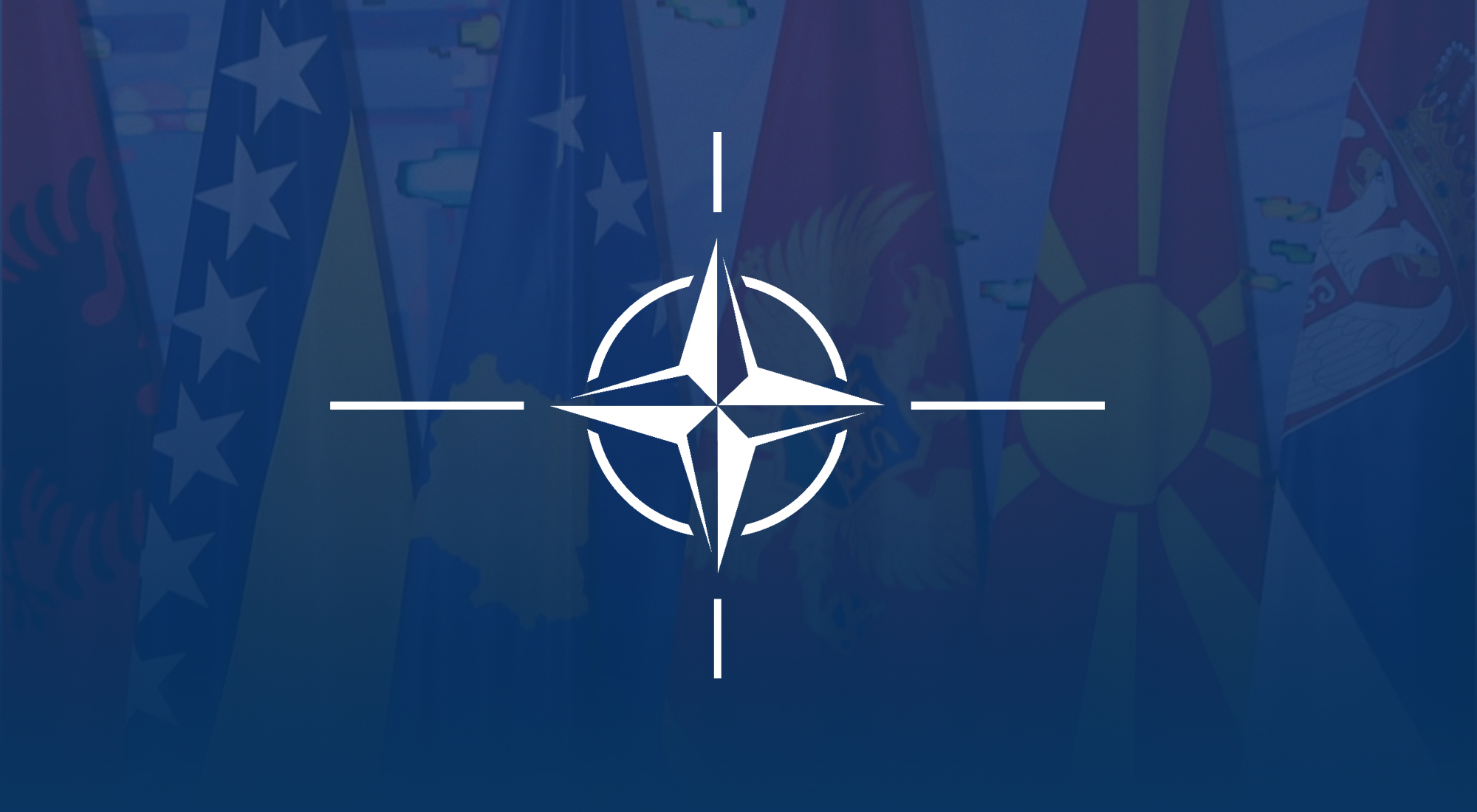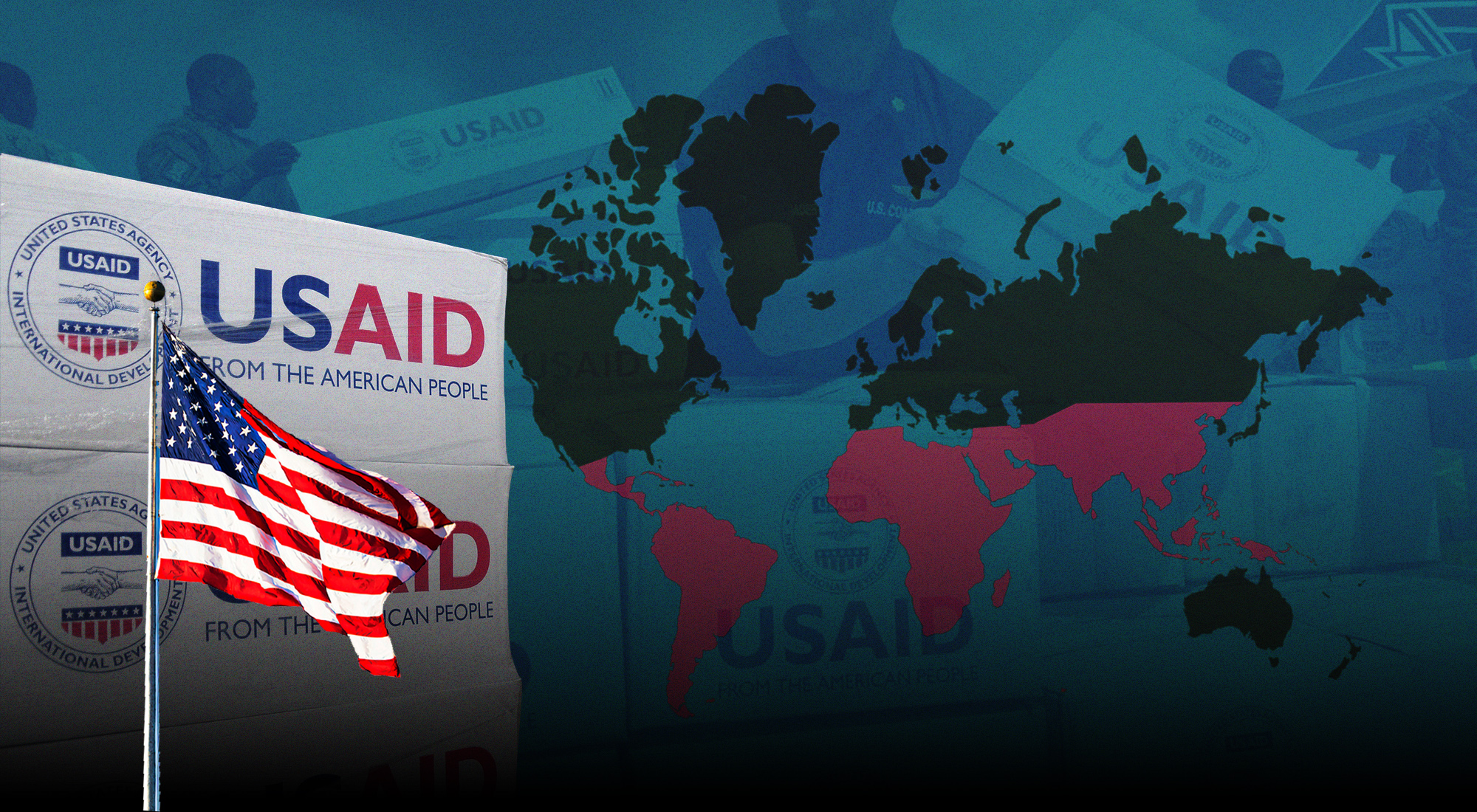Mediation in the Russia-Ukraine conflict has so far failed to produce a lasting peace, largely due to the war’s complex roots, ranging from Ukraine’s internal struggles to a broader geopolitical standoff between Russia and Western countries. While humanitarian mediation has facilitated evacuations, prisoner exchanges, and infrastructure protection, informal mediation has also enabled cross-border trades.
From 2014 to 2022, diplomatic efforts were limited and lacked inclusive participation, failing to prevent escalation to full-scale war. Frameworks like the Minsk accords (2014-2015) and the Steinmeier formula (2016) proved ineffective, while parallel efforts, such as U.S.-Russia talks, stalled. In fact, after the failure of the ceasefire deals announced as part of the Minsk accords (September 2014 and February 2015), the talks between the United States and Russia, especially between U.S. special representative Volker and Russian presidential representative Surkov, had stalled. They had three meetings in 2017 (21 August in Minsk, 7 October and 13 November in Belgrade) and one meeting in 2018 (26 January in Dubai),[1] but the meetings focused on an in-depth discussion of the diplomatic landscape of those years surrounding efforts to resolve the conflict in the Ukrainian region of Donbas.
The United States and Russia agreed to reflect on the discussions and to think about further ways to address this challenge,[2] but, as of now, the main obstacles, such as the irreconcilable positions on sovereignty and security guarantees, the promise of NATO membership for Ukraine, and the lack of enforcement mechanisms, prevailed over peace. The war that started on 24 February 2022 radically altered the mediation landscape, rendering the Minsk process obsolete and marking the collapse of nearly a decade of international mediation, particularly by the OSCE and the Trilateral Contact Group (TCG). With neither side able to immediately win outright, but both capable of avoiding a complete defeat, the war has changed, becoming a prolonged stalemate. In response, Ukraine and its Western allies have adopted a strategy focused on resilience: halting further Russian advances, maintaining Western support, pushing for EU accession, and developing credible security guarantees.
Any future mediation must align with this new reality, requiring a fresh framework that addresses the war’s political, military, and geopolitical layers. Rather than dismissing mediation, it is crucial to recognize its limitations and the need for broader, better-coordinated approaches.[3]
Informal mediation
Informal mediation in the Russia-Ukraine conflict initially played a crucial humanitarian role, facilitating direct communication between parties to address urgent issues, such as the evacuation of civilians, prisoner exchanges, and the protection of vital infrastructure. These efforts, often spearheaded by Ukrainian and international human rights organizations, charitable foundations, and trusted local individuals, also extended into unofficial economic exchanges, particularly in coal. Notably, the OSCE’s Special Monitoring Mission, though not formally mandated to mediate, contributed to reducing tensions by facilitating dialogue on the ground. However, over time, informal mediation came into conflict with the evolving official policies of both Russia and Ukraine.
Moscow moved to dismantle the influence of unofficial actors, such as civil society representatives, who maintained unsanctioned contacts with Ukrainian counterparts, thereby consolidating the Kremlin’s control over the separatist territories. Similarly, Ukraine, in an effort to frame the conflict as a direct war with Russia, adopted a policy of isolating the self-proclaimed Donetsk and Luhansk People’s Republics. This led to the systematic restriction of informal mediation channels, which were increasingly viewed as incompatible with the national strategy. The onset of the COVID-19 pandemic further accelerated the decline of these informal initiatives, as both sides used the crisis to tighten control and limit grassroots engagement.[4]
The Normandy Format
The Normandy Format, convened in June 2014 during the 70th anniversary of D-Day, brought together the heads of state of Ukraine, France, Russia, Germany and the UK for fundamental discussions aimed at de-escalating the crisis in eastern Ukraine. This initiative led to the creation of the Trilateral Contact Group (TCG), composed of representatives from Ukraine, Russia, and the OSCE, which was tasked with mediating on-the-ground efforts. While the Normandy Format functioned as a strategic diplomatic platform, the TCG had an instrumental role in attempting to implement the Minsk agreements, the first one agreed upon in September 2014 and later through the Minsk II protocol in February 2015. Despite these diplomatic efforts, neither agreement succeeded in halting the conflict’s progression.
The mechanisms established failed to yield lasting results, with subsequent summits in Berlin in 2016 and in Paris in 2019 unable to overcome implementation deadlocks. A core weakness of the Normandy Format was its structural bias: it allowed Russia, a primary actor in the conflict, to assume the role of participant in the mediation process, thereby framing the war as an internal Ukrainian issue rather than a geopolitical confrontation involving Russian aggression. Additionally, the exclusion of Crimea from the mediation talks further limited the effectiveness and credibility of the format. Ultimately, the Normandy Format’s narrow scope and flawed premises contributed to its inability to prevent the conflict from escalating into full-scale war.[5]
OSCE
The OSCE played a key role in early mediation efforts in Ukraine, deploying the Special Monitoring Mission (SMM) after the 2014 conflict escalation. Through integration with the Trilateral Contact Group (TCG), the OSCE expanded its mediation capacity, with its Chief Monitor coordinating the Security Working Group from 2015. The TCG included representatives from Ukraine, Russia, and the self-proclaimed Donetsk and Luhansk “people’s republics” and enabled the OSCE to mediate humanitarian operations such as prisoner exchanges, evacuations, and infrastructure repairs. By structuring negotiations into four working groups (security, political, economic, and humanitarian), the TCG allowed progress on less contentious issues, with the economic group proving most effective. This institutional approach enabled some confidence-building despite stalled political talks.
However, as Russia consolidated control in eastern Ukraine, Moscow increasingly viewed the TCG as irrelevant. The OSCE’s mediation efforts became constrained due to waning cooperation and growing dysfunction. While initially more effective than the Normandy Format, especially on humanitarian issues, the OSCE ultimately failed to implement the Minsk agreements. Its efforts helped stabilize Donbas temporarily but fell short of resolving the core political conflict: polarized standpoints on national sovereignty and security assurances, Ukraine’s NATO aspirations, and the absence of reliable enforcement tools. The failure of mediation efforts was not solely due to the OSCE or the TCG but also to the Normandy Format itself because of a lack of a coherent framework and political guarantees. While the TCG managed localized humanitarian issues, it failed to address the deeper strategic conflicts between Russia, Ukraine, and the West, which are Russia’s ambition to reassert its influence over former Soviet territories and resist NATO and EU expansion, Ukraine’s pursuit of integration with Western institutions as a means of securing its sovereignty and independence, and the West’s commitment to defending the post-Cold War European security order while upholding principles of international law, particularly the respect for territorial integrity.
The lack of enforcement mechanisms in all formats allowed Russia to escalate the conflict and Ukraine to prepare for the next phase. The Minsk accords, seen as politically unviable and imposed unfairly on Ukraine, eventually lost support from Kyiv’s allies. Crucially, no alternative diplomatic formats emerged to replace them. As the OSCE became sidelined and focused only on frontline management, major actors like France, Germany, the United States, the UK, NATO, and the EU failed to step in with stronger diplomatic initiatives—leaving a dangerous vacuum in conflict prevention.[6]
After the failure of the Minsk accords
Following the collapse of the Minsk agreements and Russia’s military incursion into Ukraine in 2022, three waves of mediation have emerged. The first wave in early 2022 involved talks in Belarus and Turkey. Though initially promising, reports suggest Western powers discouraged Ukraine from accepting Russian proposals, favoring continued resistance.[7] Russia’s retreat from Kyiv and growing Western military aid further reduced Ukraine’s willingness to compromise, while revelations of alleged Russian war crimes hardened positions and halted talks.
The second wave, starting mid-2022, focused on humanitarian issues such as prisoner swaps, the return of abducted children, and the Black Sea Grain Initiative. These efforts, led by countries like Turkey, Qatar, and Saudi Arabia with the UN and the Holy See’s (Vatican) support, achieved modest success but avoided political questions.
The third and current wave targets a broader ceasefire and political settlement. Since May 2022, diplomatic efforts have centered on the “2+6” stalemate: the “2” stands for the peace proposals advanced by Presidents Volodymyr Zelensky and Vladimir Putin. Zelensky’s “10 Essential Steps” calls for Russian withdrawal, justice, and firm security guarantees. President Putin’s position remains less clearly defined but has included calls for Ukrainian neutrality, territorial concessions and removal of extreme right-wing elements. These opposing frameworks remain incompatible: Ukraine demands full withdrawal as a precondition for talks, while Russia insists on terms that challenge Ukrainian sovereignty. The “6” refers to initiatives launched by third-party states and organizations: China, Brazil, Indonesia, the Holy See, a coalition of African nations, and Saudi Arabia. While the Chinese, Indonesian, and African proposals uphold the principle of territorial integrity, they suggest a ceasefire as an initial step, an approach that Kyiv rejects, viewing it as solidifying the status quo and legitimizing Russian occupation. The Holy See has focused its diplomatic energy on the humanitarian issue of repatriating roughly 20,000 Ukrainian children. Brazil and Saudi Arabia have emphasized establishing a neutral mediation framework to facilitate dialogue between the two sides. However, none of these efforts has gained full endorsement from Ukraine or its Western allies. This evolving framework allows space for non-Western proposals while continuing Ukraine’s EU approximation. However, a successful reset depends on a military stalemate.
Despite reduced Western aid, Ukraine’s growing military industry prevents a collapse. Both sides appear to be locked in a struggle aimed at avoiding collapse rather than securing a decisive victory. Ukraine wants robust security guarantees; Russia seeks to prevent NATO expansion and reduce Western influence. This mutual pragmatism may prolong the stalemate, allowing limited ceasefires but not a comprehensive peace—yet it keeps diplomatic pathways open for future resolution.
Since 2022, mediation in the Russia-Ukraine war has retreated from traditional Western brokers like France, Germany, and the OSCE toward broader international engagement. Ukraine continues advancing its peace plan, partially aligning with Saudi diplomacy. At the 2023 Arab League Jeddah Summit, the Jeddah Declaration affirmed respect for sovereignty and territorial integrity, implicitly supporting Ukraine’s claims.
The West, through NATO, the G7, and the EU, has maintained strong diplomatic support for Ukraine. On 8 November 2023, the G7 Foreign Ministers’ Statement called for Russia’s full withdrawal and endorsed Zelensky’s peace plan as the primary negotiation framework. Long-term security commitments have been pledged via coordinated bilateral agreements, with over 30 countries backing this approach.[8]
European Union
The Russia-Ukraine conflict has challenged the EU’s role as a mediator, exposing the tension between its support for Ukraine’s European integration and its attempts at neutrality. While the EU has positioned itself as a diplomatic actor, its promotion of the Eastern Partnership and support for Ukraine made it a party to the conflict in Russia’s eyes. Member states like France and Germany contributed to past mediation efforts, notably through the Minsk II process, while the EU applied coercive tools against Russia, such as sanctions and conditional aid. Its effectiveness as a mediator depends heavily on internal unity: divisions weaken its influence, while coherence and credibility enhance it. It is an important actor to guard against Russia’s breaches of international law. Following Russia’s annexation of Crimea in 2014, the EU responded with diplomatic isolation and escalating sanctions, despite internal dissent, especially by Hungary and Slovakia. Overall, the EU’s strategy has blended mediation, coercive diplomacy, and political pressure under its European Neighborhood Policy.
The EU has supported Ukraine with aid, political backing, and structural assistance. Despite initiatives like Minsk II and sanctions on Russia, the conflict remains unresolved. Ukraine views these efforts as ineffective, partly due to the EU’s internal incoherence. While the EU sees itself as united, others perceive fragmentation, undermining its credibility. This highlights how unity and the balance between values and interests shape the EU’s role in conflict mediation.[9]
At the most recent Shanghai Cooperation Organization (SCO) summit, Putin thanked Chinese President Xi Jinping and Indian Prime Minister Narendra Modi for their continued support, despite Western criticism of China and India for bolstering Russia’s war economy through oil purchases. Meanwhile, Russian strikes on Ukraine continue, prompting strong condemnation from Germany and France, who pledged to increase pressure on Moscow. Zelensky rejected any proposal to establish a buffer zone, accusing Russia of delaying peace and reiterating his stance on full territorial restoration and robust international guarantees.
Turkey
Over the past four years, Turkey has emerged as a key mediator in the Russia-Ukraine war, leveraging its NATO membership and strong ties with Russia. In 2025, Ankara hosted two major diplomatic meetings: one in May during President Donald Trump’s regional visit, which led to a prisoner exchange, and another in June at Istanbul’s Çırağan Palace, where both sides exchanged memorandums.
While a ceasefire remains out of reach, Turkey’s “Istanbul Process” has become one of the few active diplomatic channels. Backed by Foreign Minister Hakan Fidan and intelligence chief İbrahim Kalın, Turkey now aims to host a summit with Recep Tayyip Erdoğan, Trump, Putin, and Zelensky. Turkey’s credibility stems from a decade-long strategic relationship with Russia, including cooperation in defense, energy, and diplomacy. The controversial purchase of Russian S-400 air defense missile systems in 2019, which led to U.S. CAATSA sanctions, reflected Ankara’s frustration with the West. Despite divergent interests, particularly in Syria, Turkish-Russian ties have deepened. Turkey’s refusal to join NATO sanctions and its sustained mediation efforts underscore its strategy of engagement and rising global influence.
On the other hand, Turkey has built a strategic defense partnership with Ukraine rooted in trust and mutual interests. Turkish Bayraktar TB-2 drones have been crucial to Ukraine’s defense, at least in the initial stages of the conflict, bolstering Turkey’s reputation as a reliable military ally. Ankara’s support for Ukraine’s NATO aspirations and opposition to Russia’s annexation of Crimea have strengthened bilateral ties, while high-level diplomacy and a planned Baykar drone factory in Ukraine signal long-term cooperation. Despite frequent Russian attacks on the factory’s construction site, Baykar plans to open the production plant in 2025. Turkey balances its support for Ukraine with ongoing dialogue with Russia, enhancing its mediator role as Western unity weakens.
Meanwhile, Western support for Ankara’s mediation is growing. Backed by Foreign Minister Hakan Fidan’s shuttle diplomacy, Turkey’s efforts, including prisoner exchanges, highlight its potential as a mediator.[10]
Israel
Israel finds itself in a complex position amid the Russia-Ukraine conflict. While closely aligned with the West and the United States, Israel engages in negotiations largely because few other countries can credibly communicate with both sides.
Former Prime Minister Naftali Bennett acted mainly as a conduit between Zelensky and Putin, rather than proposing concrete plans, unlike Turkey’s more active mediation role. Israel balances its security, cultural, economic, and political interests, maintaining a cautious stance due to Russia’s role in combating Iran-backed forces in Syria and its cultural ties to Ukraine.[11]
On 24 February 2025, Israel cast a vote against a United Nations General Assembly resolution that aimed to reaffirm Ukraine’s territorial integrity, effectively opposing a sharp condemnation of Russia’s war in Ukraine on its third anniversary. This marked a significant shift, as it was the first time Israel sided with Russia and against Ukraine since the conflict began, disrupting its previously balanced stance.[12]
China
Since Russia’s military incursion into Ukraine in February 2022, China has maintained a cautious neutrality, calling for peace but avoiding direct involvement.
On the war’s anniversary, Beijing issued a 12-point peace proposal and expressed readiness to mediate. Xi Jinping’s visit to Moscow, welcomed by Putin, signaled growing Chinese interest in brokering peace. However, Kyiv remains wary of China’s role, and the U.S. remains openly skeptical. China’s cautious diplomacy reflects a realist approach and a strategic interest; in fact, Chinese leaders avoid entanglement without clear advantage, clinching important energy deals with Russia. Early in the war, neither Ukraine nor Russia was ready to compromise, and mediation was premature.
Nevertheless, China has gained credibility through initiatives like the Global Security Initiative and successful mediation between Iran and Saudi Arabia. This success has strengthened China’s image as a stabilizing force in an emerging multipolar world, especially among Global South countries.
However, Ukraine remains hesitant. Accepting Chinese mediation could endanger vital Western support, especially from the U.S., which views China’s involvement as a challenge to its global leadership. Zelensky also has his own peace formula, backed by Western allies, which contrasts with Beijing’s ceasefire-first approach, so it makes Chinese brokering unlikely in the near term.
Ukraine’s hesitation toward Beijing’s mediation stems from three main reasons. First, Zelensky already has a Western-backed “peace formula” that demands full Russian withdrawal and territorial restoration. China’s proposal, however, calls for an immediate ceasefire and talks that closely align with Russian interests rather than Ukraine’s goals. Secondly, Ukraine remains deeply dependent on the West for diplomatic, military, political, and economic support. A Chinese-brokered peace could weaken U.S. influence and spark internal backlash in Ukraine, where pro-Western elites and public opinion dominate. Even if Zelensky supported Chinese mediation, it could threaten his legitimacy, echoing Yanukovych’s downfall after turning toward Russia.
In conclusion, while China’s role as a global security actor is growing and may be accepted by Ukraine in the future, current political and ideological realities make such mediation unlikely at present.[13]
United States of America
Under President Trump and Secretary of State Marco Rubio, the U.S. government maintains that the Ukraine-Russia conflict is unsustainable, and since Trump’s return to the presidency, ending the war has become a central objective of his administration. The U.S. pledges to use its power and influence to broker a sustainable peace through active diplomacy, with both sides expected to make difficult compromises. During March 2025 talks in Jeddah, Ukraine expressed willingness to accept a U.S.-proposed 30-day ceasefire, contingent on Russian cooperation. The U.S. has stressed that Russian reciprocity is essential for peace. Since Russia’s military incursion in 2022, the U.S. has provided US$66.9 billion in military aid, totaling US$69.7 billion since 2014, including US$31.7 billion from Department of Defense stockpiles via Presidential Drawdown Authority.[14]
Vice President JD Vance reiterated the Trump administration’s belief that it can still broker peace between Russia and Ukraine, despite little progress after President Trump’s recent meeting with Vladimir Putin in Alaska. In an NBC interview, Vance claimed both sides had made “significant concessions,” though Trump’s apparent willingness to grant Moscow major compromises sparked concern during an urgent White House meeting with Zelensky and NATO leaders. While Trump asserted that Putin was ready for peace, Russia has continued its attacks and pressed for broad territorial gains. European leaders welcomed Trump’s openness to security guarantees for Ukraine, though the specifics remain unclear. Russian Foreign Minister Sergey Lavrov cautioned that no summit could proceed without a concrete agenda. Vance stressed that the United States supports peace but emphasized that Ukraine must define its own borders. He noted Trump’s February rebuke of Zelensky for showing insufficient gratitude, while also affirming that the United States would not impose solutions, since “it is not our country.”[15]
From Russia’s perspective, President Vladimir Putin recently acknowledged what he called “sincere efforts”[16] by the U.S. to end the war in Ukraine and suggested that broader peace initiatives could emerge from ongoing talks with Donald Trump. During a meeting with senior officials, Putin praised recent diplomatic engagement and claimed to have reached “understandings” with Trump in Alaska, but stopped short of agreeing to direct peace talks with Ukrainian President Volodymyr Zelensky. He repeated familiar accusations blaming the West and NATO expansion for the conflict, claims dismissed by Western allies. U.S. Special Envoy Steve Witkoff said Putin agreed in principle to provide Ukraine with NATO-style security guarantees, though Moscow has not confirmed this. Zelensky expects a written framework soon, but Russia criticized Western proposals as “one-sided”. French President Emmanuel Macron revealed that Trump gave Putin a deadline to commit to peace talks, though Trump has extended it. Once claiming he could end the war in a day, Trump now pushes for a long-term peace deal that excludes NATO membership for Ukraine but includes alternative security guarantees, while emphasizing European responsibility and continued, non-military U.S. support.[17]
Conclusion and Scenarios
Over the course of the Russia-Ukraine war, global diplomatic dynamics have evolved significantly. Western actors, primarily NATO, the G7, and the EU, have remained firm in supporting Ukraine, emphasizing Zelensky’s peace formula and long-term security guarantees. However, alternative diplomatic channels have gained relevance. Turkey has emerged as a credible mediator, leveraging its strategic ties with both Russia and Ukraine through the Istanbul Process. Its pragmatic diplomacy, underpinned by military cooperation with Kyiv and continued dialogue with Moscow, has positioned Ankara as a key actor in shaping potential peace frameworks.
China, meanwhile, seeks to redefine its global role through realist-driven mediation. Although Beijing’s early neutrality limited its initial credibility, its successful brokering between Iran and Saudi Arabia and the launch of the Global Security Initiative have strengthened its standing among non-Western states. Yet, Ukraine remains hesitant to accept China’s involvement, fearing loss of Western support and viewing Beijing’s peace proposals as legitimizing Russian occupation. This dilemma reflects broader geopolitical fractures: the decline of unipolar U.S. dominance, the rise of a multipolar world order, and the deepening divide between liberal and realist visions of global order.
Critically, both Turkey and China represent models of conflict mediation that prioritize balance and pragmatism over ideological alignment. However, their efforts face limitations due to entrenched interests, lack of trust, and minimal political will from key stakeholders. While traditional Western frameworks, such as the United States, the European Union, and the UK, remain dominant, Russia’s perception of them as biased opens space for alternative mediators. The path to peace in Ukraine may ultimately depend less on grand alliances and more on adaptable and multipolar diplomacy based on legitimacy, realism, and strategic patience.
After reviewing the key peace efforts undertaken by the main global actors, here are the potential scenarios that may unfold in the near future:
In the actual landscape, the current military and diplomatic deadlock may persist, especially if neither side achieves a decisive advantage. Western support for Ukraine could gradually wane under the pressure of domestic politics, while Russia relies on a strategy of exhaustion and international fatigue. In this scenario, sporadic escalations and temporary ceasefires may occur, but a durable peace remains elusive. The human cost continues to rise, and reconstruction is indefinitely postponed.
A more hopeful outcome involves a shift in political will, both in Kyiv and Moscow, toward compromise under strong and collective international mediation. A successful initiative, possibly brokered by a coalition of neutral actors (e.g., Turkey, Saudi Arabia, Brazil, and the Holy See), could lead to a framework agreement. This would require guarantees of Ukraine’s sovereignty and territorial integrity while also addressing Russia’s stated security concerns. A new version of the Helsinki Accords, an agreement to reduce the tensions between the West and the East,[18] or a UN-supervised peace process could formalize this.
Another scenario could be similar to other post-Soviet conflicts; the war could be frozen with an armistice but no political resolution. Occupied territories remain under Russian control, Ukraine continues its Western alignment, and diplomacy stalls. This outcome would institutionalize instability in the region and weaken the credibility of international norms.
The Russia-Ukraine conflict is more than a regional war; it is a test of the rules-based liberal global order. It challenges the efficacy of international law, the limits of sovereignty, and the future of multilateral diplomacy. The hope that this war ends through global mediation and signed guarantees by both parties involved is not only morally grounded but also strategically sound. It reflects a deeper truth: sustainable peace is never imposed; it is negotiated. The broader lesson here is the urgent need for reinvigorated conflict-resolution frameworks that are inclusive, enforceable, and adaptable to 21st-century geopolitics. Only then can the international community prevent such devastating wars from recurring.
[1] “Lavrov says results of Volker-Surkov latest meeting on Ukraine are not hopeless,” TASS Russian News Agency, February 11, 2018, https://tinyurl.com/kyk74683.
[2] U.S. Embassy Kyiv, “Readout of Meeting between U.S. Special Representative Volker and Russian Presidential Representative Surkov,” U.S. Embassy in Ukraine, November 14, 2017, https://tinyurl.com/ywfhc25x.
[3] Tetyana Malyarenko and Stefan Wolff, “Unfulfillable Promise: Mediation Efforts in the Russian-Ukrainian War Since 2014 – Part 1,” Ponars Eurasia, December 5, 2023, https://tinyurl.com/4wzan7j6.
[4] Ibid.
[5] Ibid.
[6] Ibid.
[7] “H-Diplo | RJISSF Commentary III-1: Did Boris Johnson Prevent an Early End to the War in Ukraine?,” H-Diplo|RJISSF, September 12, 2024, https://issforum.org/commentary/h-diplo-rjissf-commentary-iii-1-did-boris-johnson-prevent-an-early-end-to-the-war-in-ukraine.
[8] Tetyana Malyarenko and Stefan Wolff, “Unfulfillable Promise: Mediation Efforts in the Russian-Ukrainian War Since 2014 – Part 2”, Ponars Eurasia, January 12, 2024, https://tinyurl.com/4wzan7j6.
[9] Natalia Chaban, Ole Elgström, and Michèle Knodt, “Perceptions of EU Mediation and Mediation Effectiveness,” Cooperation and Conflict 54, no. 3 (2019): 327–343, https://tinyurl.com/bd9y3yux.
[10] TRENDS Turkey Virtual Office, “The Istanbul Process: Türkiye’s Mediation in the Russia-Ukraine War,” TRENDS Research & Advisory, June 5, 2025, https://tinyurl.com/2kcfws4e,
[11] Alan Cunningham, “Conflict Mediation: Turkey and Israel as Mediators in the Russian-Ukraine War,” Modern Diplomacy, March 16, 2022, https://tinyurl.com/yc86ehna.
[12] “Joining US, Israel votes against UN motion condemning Russian invasion of Ukraine,” The Times Of Israel, February 25, 2025, https://tinyurl.com/bdeacbzk.
[13] Petro Shevchenko, “The Dilemma of China’s Role as Mediator in the Case of Ukraine,” Modern Diplomacy, March 16, 2023, https://tinyurl.com/5724m4ye.
[14] Bureau of political-military affairs, “U.S. Security Cooperation with Ukraine,” U.S. Department of State, March 12, 2025, https://tinyurl.com/37y3jrww.
[15] Mariana Alfaro, “Vance Says U.S. Can Still Broker Peace in Ukraine-Russia War,” The Washington Post, August 24, 2025, https://tinyurl.com/5c6dp62z.
[16] Tessa Wong, “Putin says he reached ‘understandings’ with Trump over end of Ukraine war,” BBC, September 1, 2025, https://tinyurl.com/3xsn2ve8.
[17] Ibid.
[18] “Helsinki Accords,” Encyclopedia Britannica, July 31, 2025, https://tinyurl.com/4bdtbax6.









